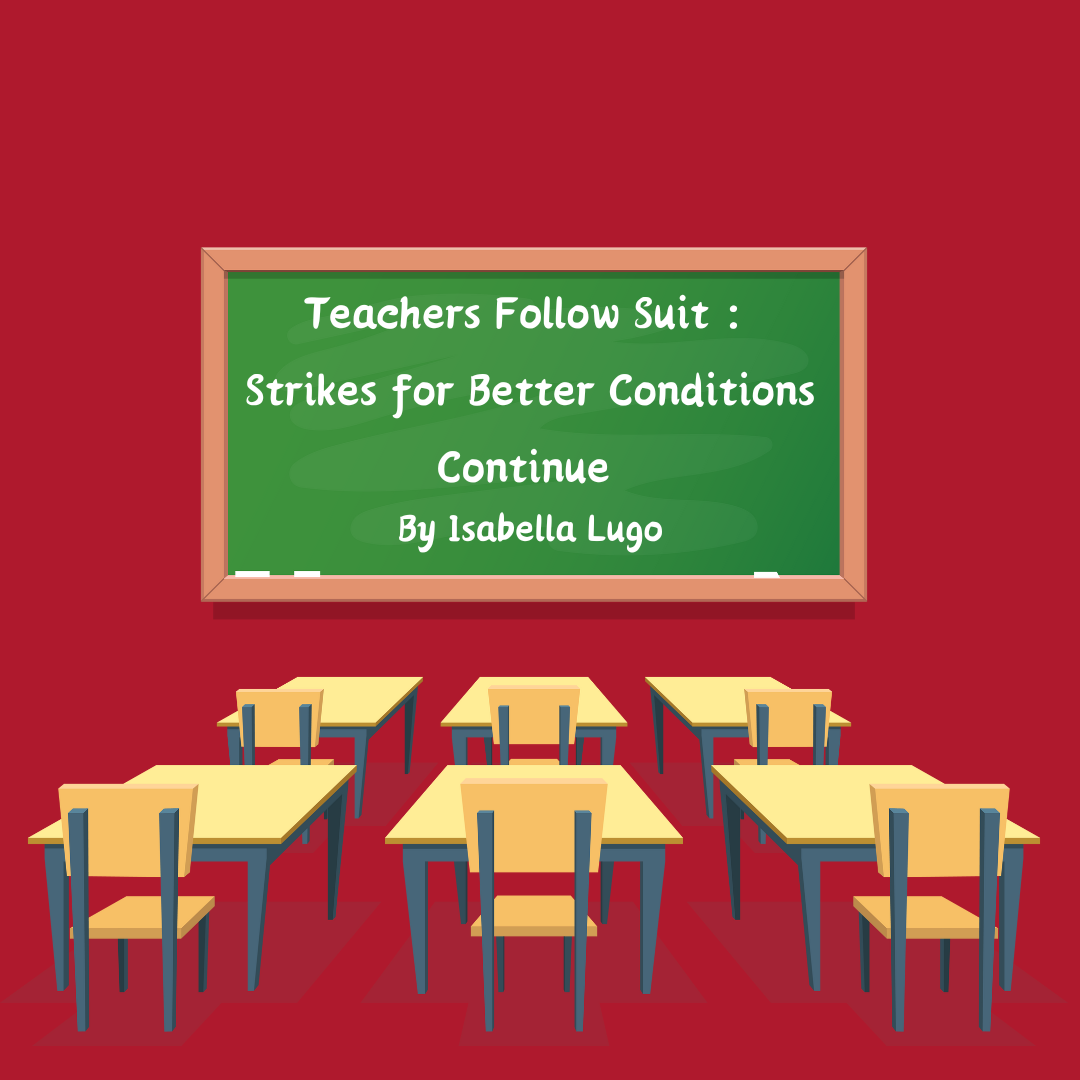After the strikes of Union Writers and SAG-AFTRA (The Screen Actors Guild-American Federation of Television and Radio Artists) to protest poor treatment and wages (among other things), teachers have followed suit in this rally for better, livable wages.
Teachers have been striking and rallying since 1968. According to the Zinn Education Project, approximately 27,000 teachers, along with administrators, turned in their letters of resignation and quit. This was the first teacher strike recorded.
Strikes are not an uncommon way to protest unfair wages and treatment. Usafacts.org reports 27 strikes have occurred since 2018. Strikes started in the U.S in March of this year, and involved staff other than teachers.
According to Usafacts.org: “…nearly 30,000 public school employees went on a three-day strike in the Los Angeles Unified School District (LAUSD). This was the most recent large-scale school strike in the US, and it impacted over half a million students.”
Teachers were accompanied by bus drivers, administrators, teacher aids and custodians in the fight for an increase in pay.
Strikes are not the only form of protest carried out by teachers and other staff. Usafacts.org lists other forms of protest, such as staged walkouts and “sick-outs” (teachers and staff all call in to work “sick” on the same day).
Many teachers and staff are not able to strike due to laws established by the state. Florida is a “No Strike” state; the law is referred to as a “no-strike law.” According to Duval Teachers United: “This prohibition is in the Florida Constitution Article 1, section 6, and in Florida Statute Section 447.505.”
Online Sunshine states: “No public employee or employee organization may participate in a strike against a public employer by instigating or supporting, in any manner, a strike. Any violation of this section shall subject the violator to the penalties provided in this part.”
Teachers, among other school staff, in Portland, Oregon have been exercising their right to strike. On November 1st, 2023, these workers began their strike. According to The New York Times, students will have missed eleven days of school.
Are teacher strikes worth leaving students without educational time? Anna Fusco, Head of the Teacher’s Union, states:
“The ability to strike for all unions is justified if the management can’t seem to get their priorities together for their employees. Yes I see the need to strike when it’s the last resort and in all cases it’s really the last resort.”
OPB News reports that while the strike is over for teachers in Oregon, “school funding talks must continue.”
OPB also reports that the new contract created and approved by both the boards and teachers will reduce class sizes. This serves the purpose of allowing, “teachers and staff to be less overwhelmed and give students more individualized attention.
Due to class sizes including an average of 25 students or more, as is the most common case with Oregon schools, OPB writes that “hard caps,” or “firm caps,” (the action of placing students in either different classes or schools if max occupancy is reached) were favored by the Union of teachers.
The main reason the union pushed the caps was to, “…to provide the workload relief and support students and educators when they’re in schools.”
The school boards were against this plan, and rejected any plan of action that implemented the use of caps. This was due to the amount of new teachers that would need to be hired, according to OPB, which would be upwards of 500 full-time positions, and would cost approximately $65 million more each year, on top of increased salaries.
When it came to increasing teacher salaries, OPB states: At the start of the strike, the district offered an approximately 11% cost-of-living adjustment over the three-year agreement. The union wanted more than twice that, coming in at 23%.”
At the end of the day, “…the result leaned more in favor of the union. Instead of compensation increases being 6.25% the first year, 4% the second year and 3% the third year, the contract shows 4.5% in the second year. Howell said this brought the total cost of the contract up to the $175 million mark.”
Oregon is not the only state fighting for better conditions. According to WSWS.org, “Tens of thousands of educators threaten strikes across the US.”
Teachers are walking out or fully striking in states such as (according to Education Week): California (Fresno, Oakland), Nevada (Clark County), and Los Angeles.
Fusco, says that strikes are, “…very impactful and …proven to be successful. When a strike happens, the management always seems to give in and give the raise and better working conditions.”
As was the case with previous strikes such as The Writers Guild of America and SAG-AFTRA’s (The Screen Actors Guild-American Federation of Television and Radio Artists) strikes, results do not appear overnight, and until they do, strikes and rallies will continue.







